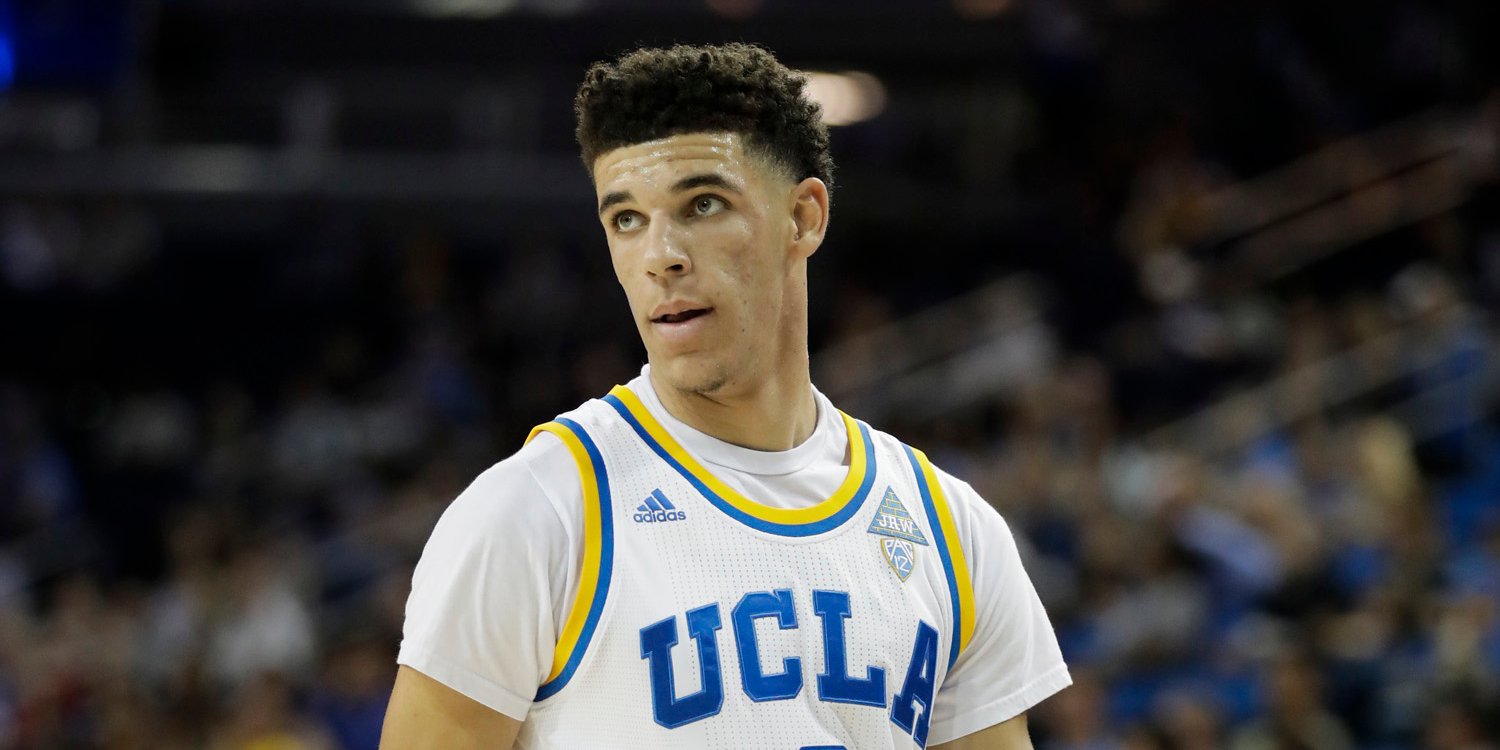
UCLA guard Lonzo Ball is considered one of the top NBA prospects in college basketball and a likely top-three draft pick come June.
The 19-year-old Ball possesses a blend of springy athleticism, height (6-foot-6), court vision, and deep-range shooting that makes him an appealing guard at the next level.
However, one aspect of his game gives the NBA world pause about his potential success in the big leagues: his shooting mechanics.
Part of Ball’s uniqueness is his quirky release — a shooting form that begins from his left hip and comes up to a release from the left side of his head despite coming out of his right hand. Some feel that this strange form could restrict Ball’s scoring prowess in the NBA.
However, there’s another potentially troubling aspect of his shot, one that he’d need to iron out to be a successful scorer in the NBA, according to The Ringer’s Kevin O’Connor: the hitch in his jumper.
Occasionally, when Ball rises for a shot, he pauses at the top of his jump, releasing the ball almost on his way down. O’Connor provides evidence:
According to O’Connor, one NBA executive posited an interesting theory about the hitch in Ball’s jumper: It may be related to the type of basketball he uses.
From O’Connor:
“Wilson balls have more grip than the balls of other brands like Nike or Adidas. Every NBA game uses the same regulation Spalding ball, but the NCAA lacks that kind of uniformity for regular season games. ‘That used to really affect me as a shooter,’ Villanova head coach Jay Wright told The New York Times in 2012. Wright played guard at Bucknell. ‘Shooters are like pitchers or golfers. It’s feel. If they don’t have a good feel with the ball, it can affect them mentally.'”
And according to O’Connor, Ball’s shooting splits vary depending on the type of ball he’s using.
“Ball might’ve experienced that adjustment this season: He’s played 26 games with a Wilson ball (17 games at home, six games at a neutral site, and three on the road). In those matches, he shot 43.6 percent on 133 3-point attempts. In seven games playing with a Nike ball (all road games), he shot only 34.1 percent on 44 attempts.”
While O’Connor reiterates it’s just a theory and based on a small sample size of shots — after all, Ball is not even finished with his freshman season — former UCLA guard and current Toronto Raptors guard Norman Powell told The Ringer that he felt a difference among basketball brands. At UCLA, Powell shot 42.6% from three at home when using a Wilson ball and 20.7% with an Adidas ball at away or neutral sites.
“The Adidas basketball was a lot more harder, firmer. The Wilson [was] a lot more smoother, had deeper ridges where you can line up the groove to get your shot,” he said. “You get a little bit more control. You can feel the ball a little bit more.”
According to O’Connor, many people feel that the NBA’s Spalding ball is unlike any of the balls used in college.
This theory ultimately isn’t the biggest obstacle in Ball’s way. As O’Connor says, unlike other great NBA point guards, Ball isn’t able to use his dribble to create a shot from anywhere. He has a simplistic, predictable arsenal, with a shot that stands to get rejected in the NBA.
While it’s likely too late to drastically change his mechanics, he might need to add better ball-handling, a better combination of moves, and an ability to adjust to basketballs to succeed in the NBA.
Read O’Connor’s breakdown »













